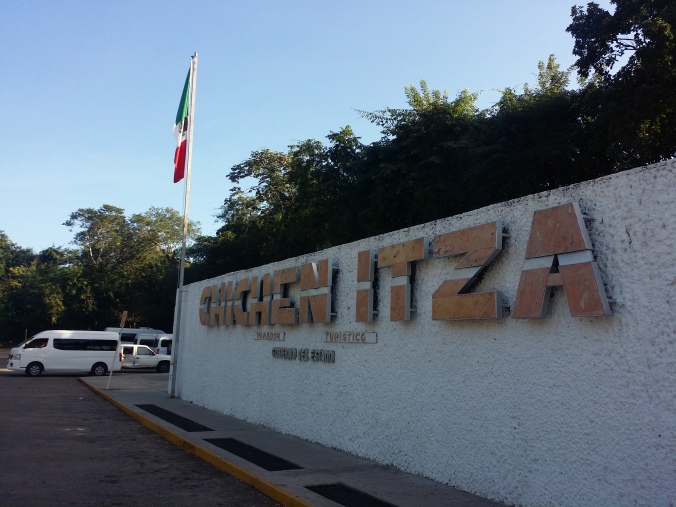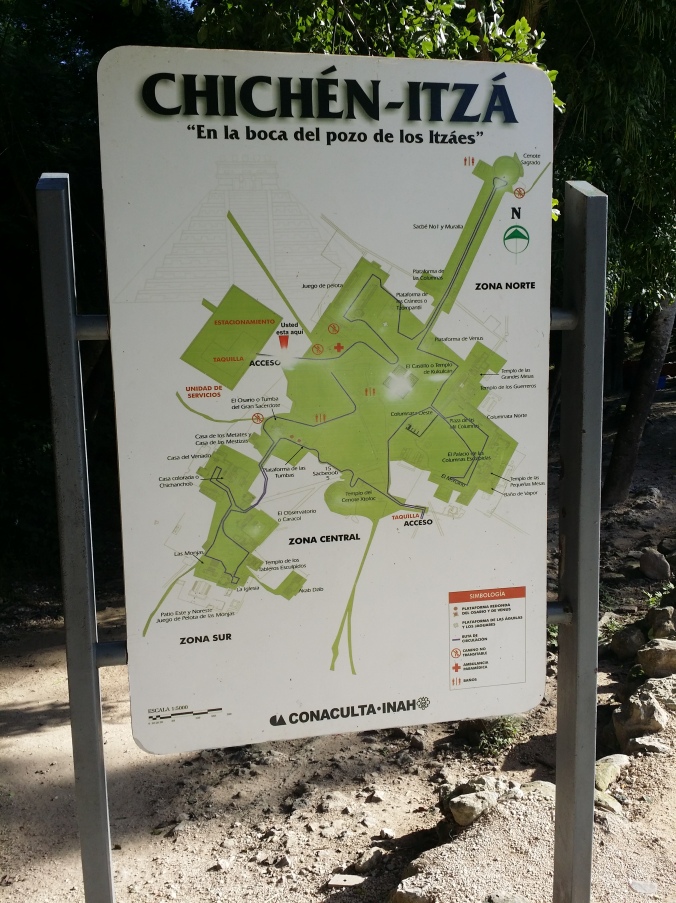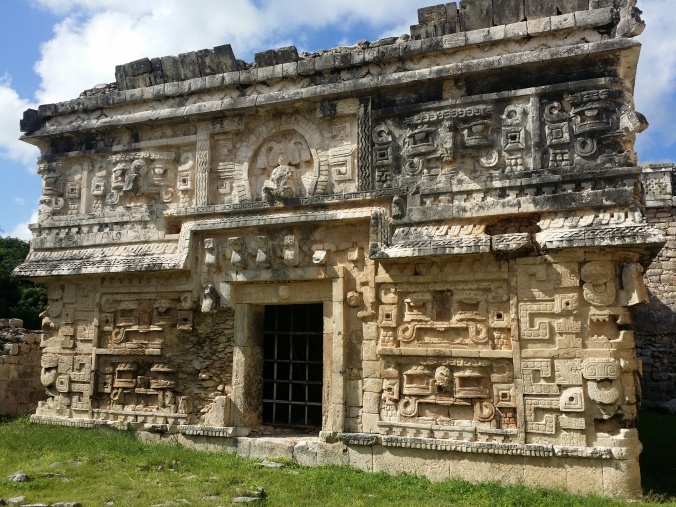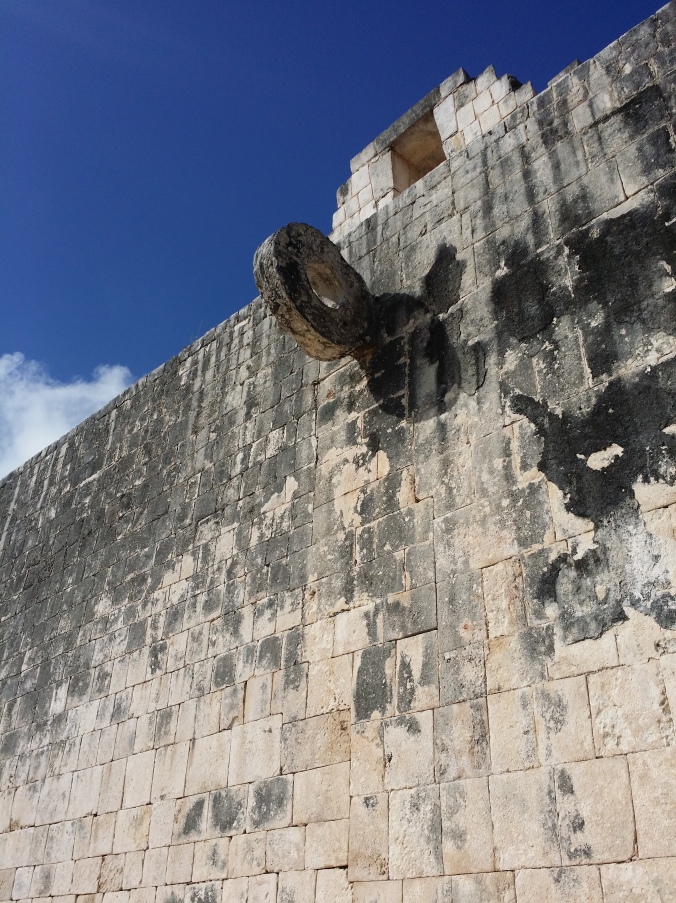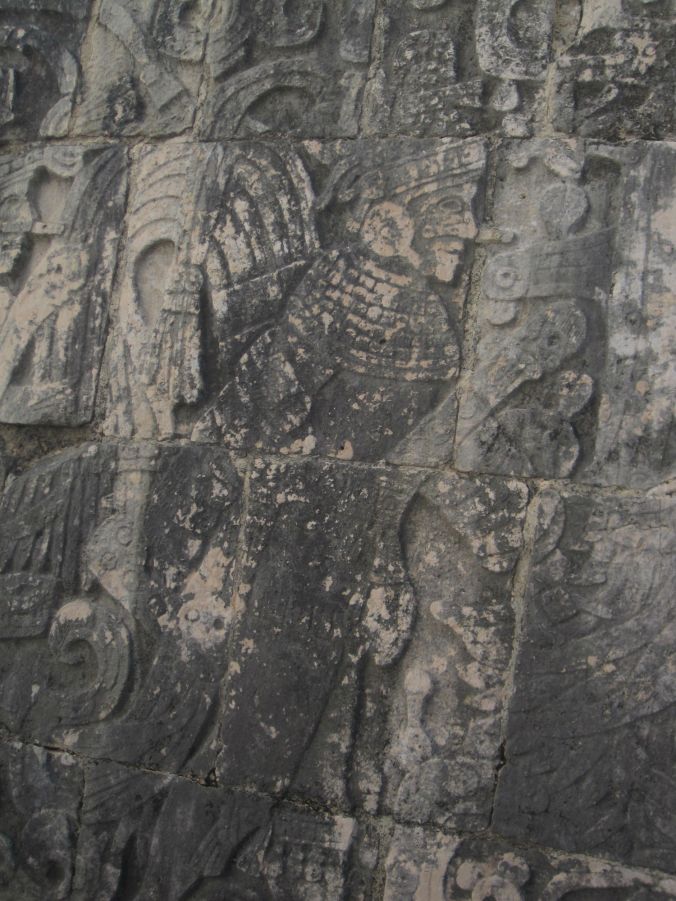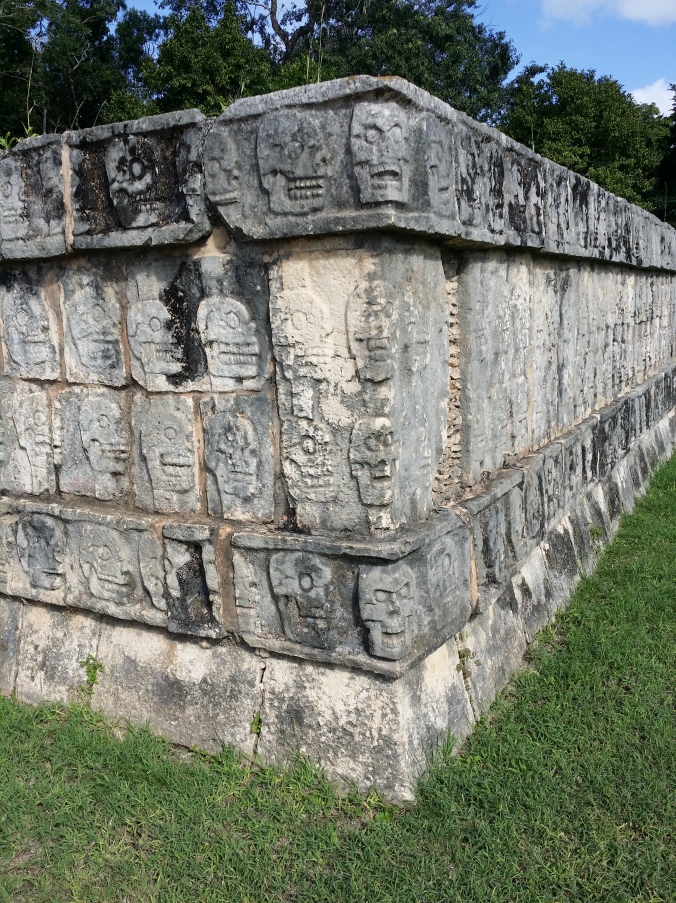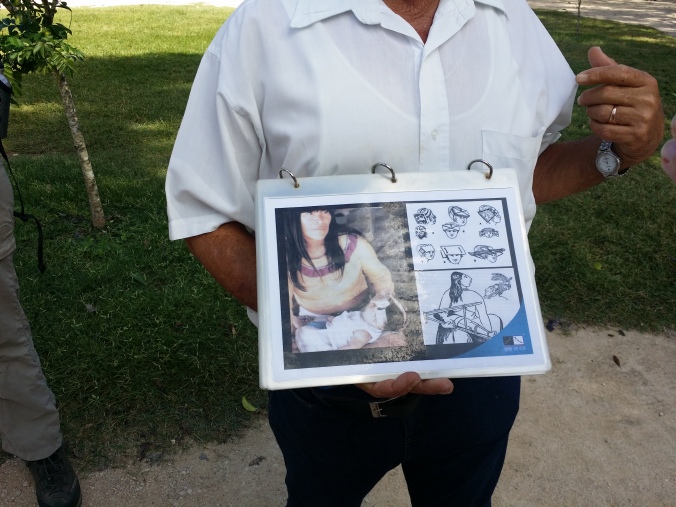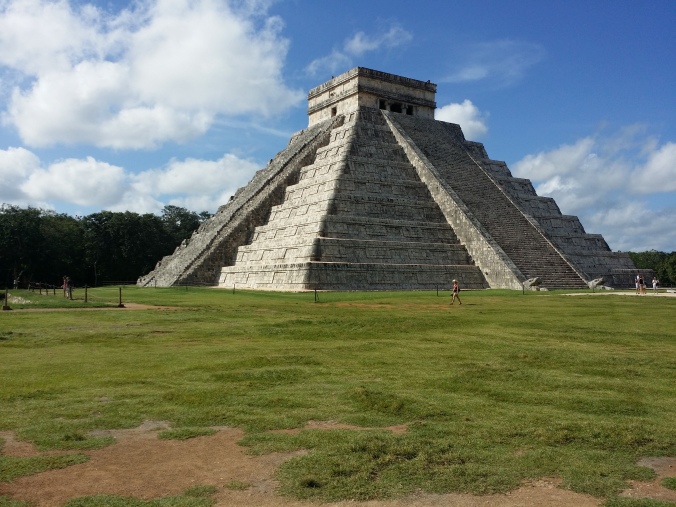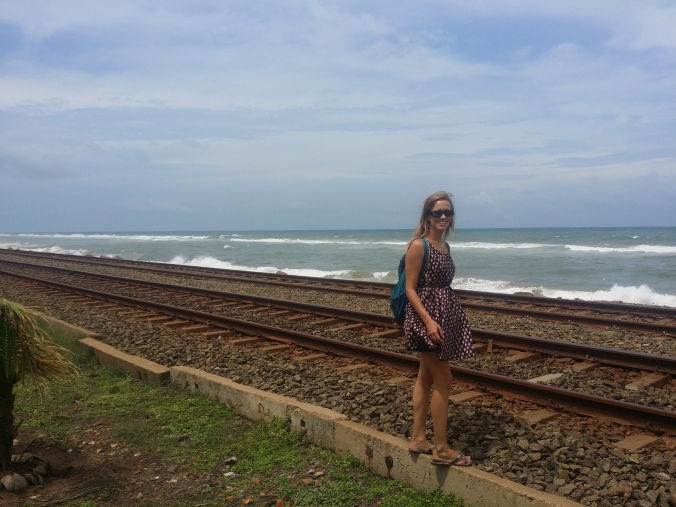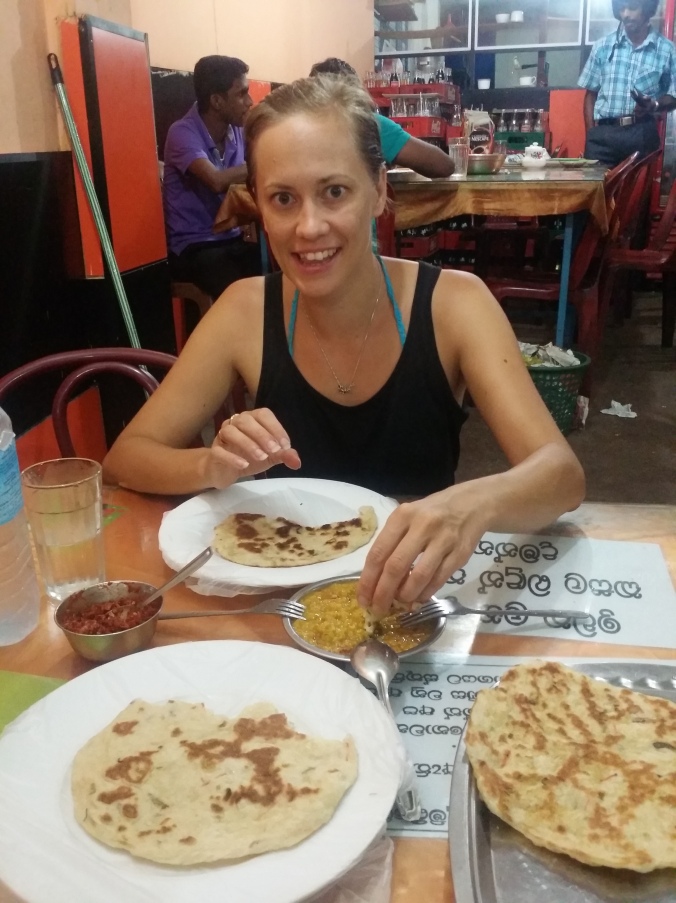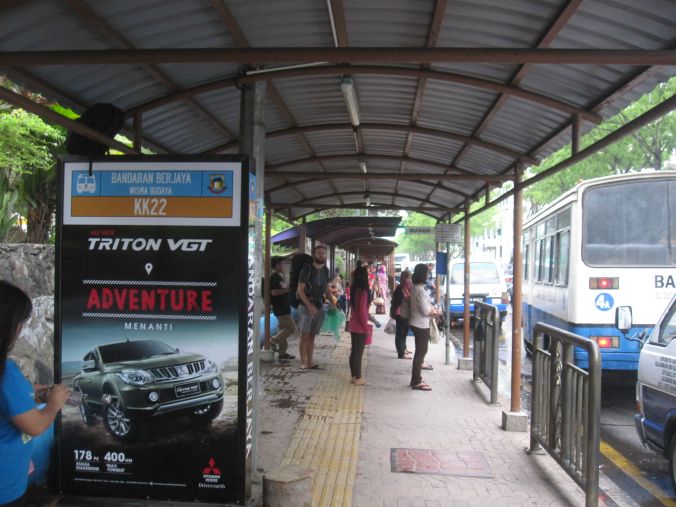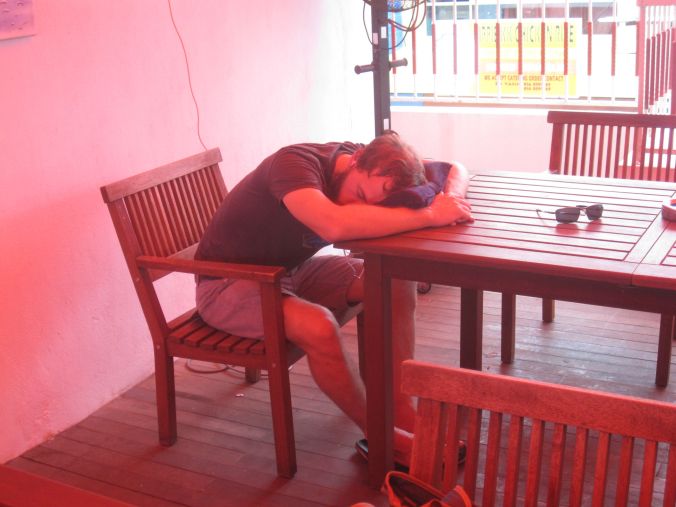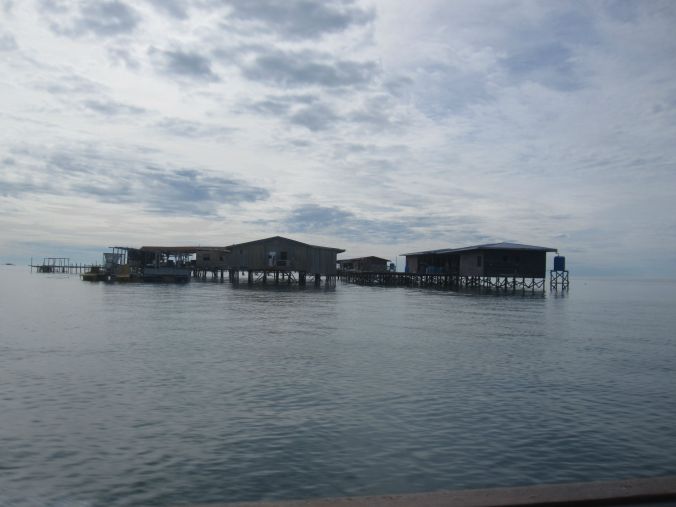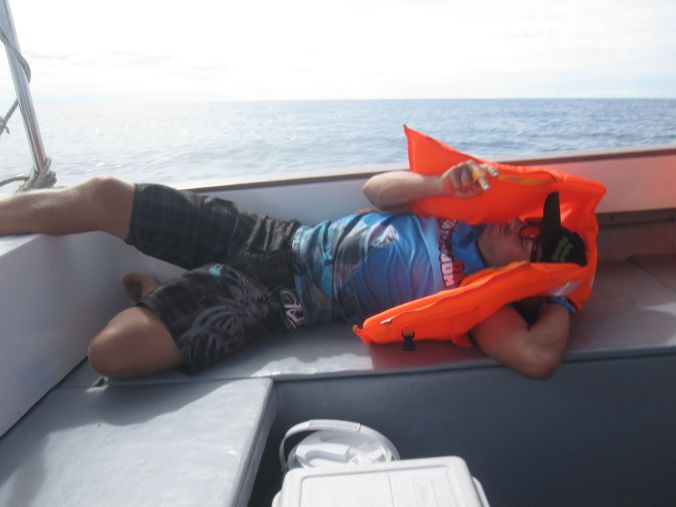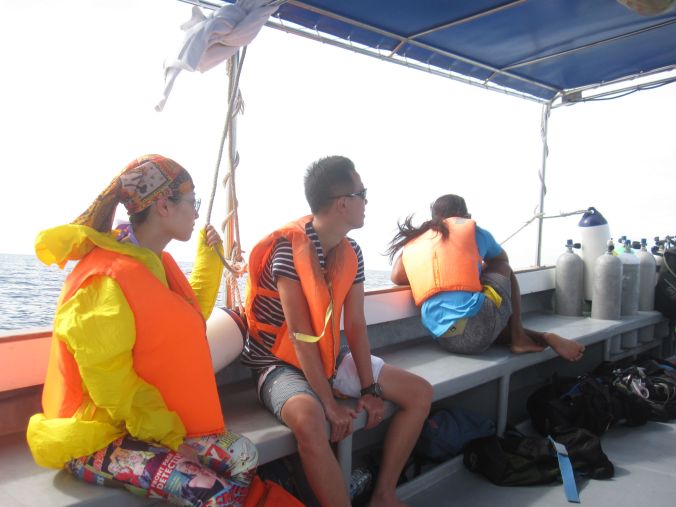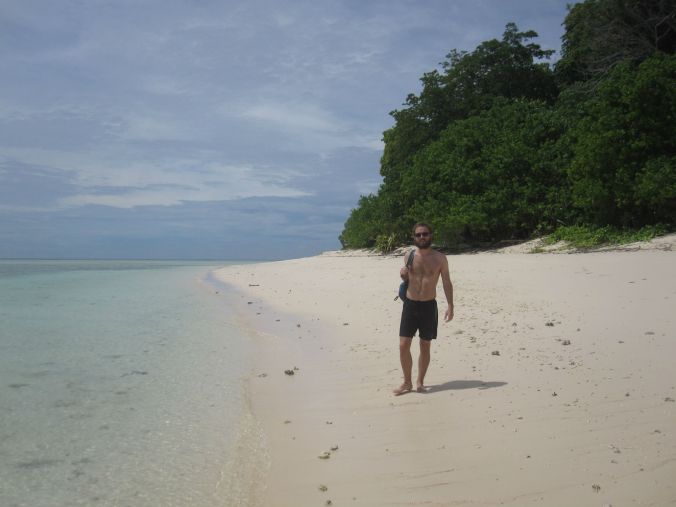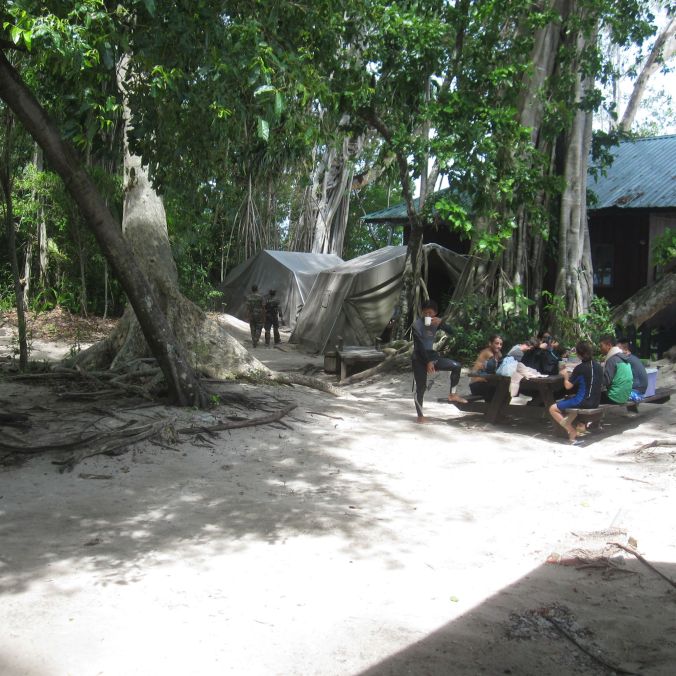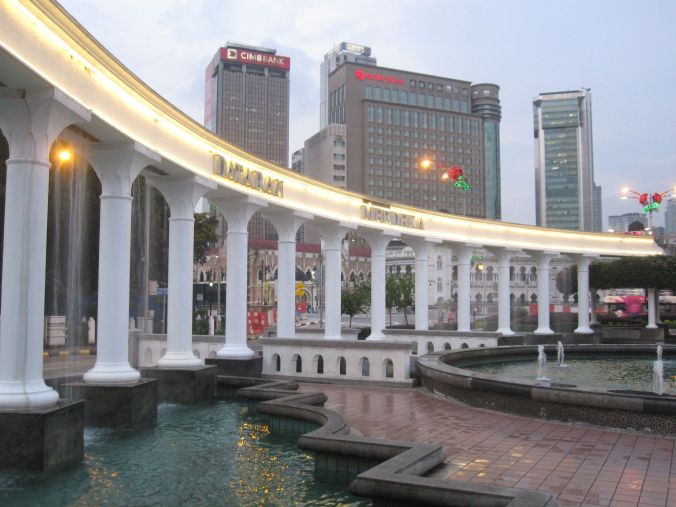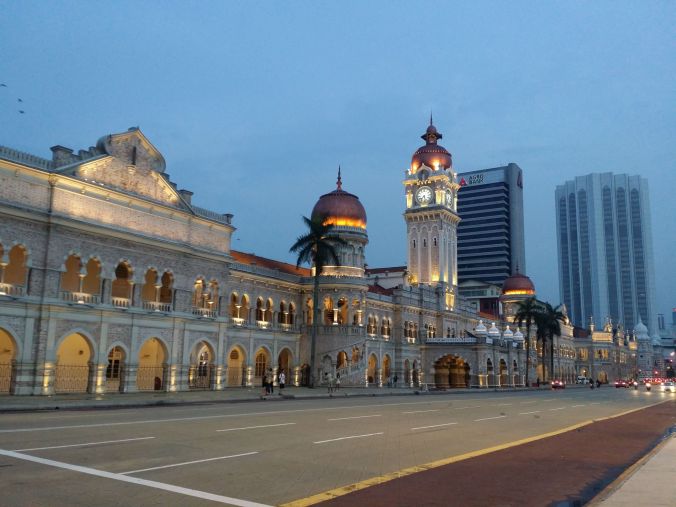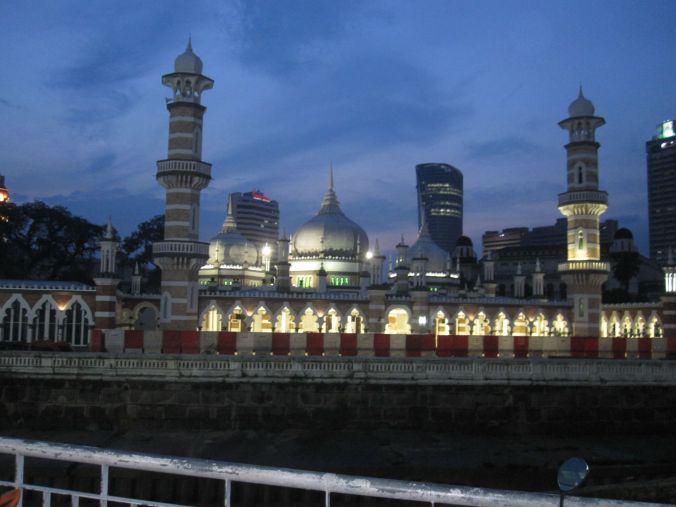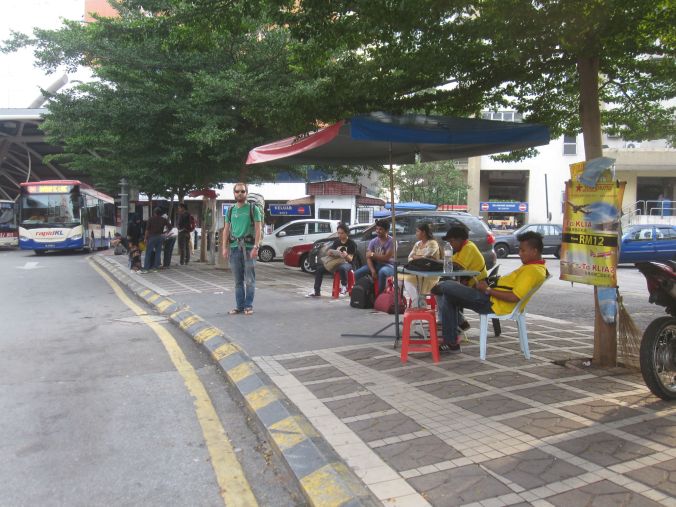(Please scroll down to the orange text for the English version)
Efter att ha spenderat två veckor på Utila så ville upp i bergen för att undkomma den förlamande hettan. Därför åkte vi till Copan Ruinas som ligger uppe i bergen några kilometer från gränsen till Guatemala. Det finns turistbussar (shuttle buses) till Copan Ruinas från både El Salvador och Guatemala, men inte från La Ceiba där vi hoppade av färjan från Utila. Då fick vi istället åka med lokalbussarna och det funkade också jättebra, men Ulrika hade betänksamheter då det skulle krävas att vi bytte buss i San Pedro Sula, en av världens farligaste städer enligt ryktet. Vi har också träffat en del backpackers här i Latinamerika, som berättat illavarslande anekdoter om personliga erfarenheter i San Pedro Sula. Vi hittade ett bussbolag som erbjöd biljetter till Copan Ruinas med byte i San Pedro Sula där vi inte behövde byta bussterminal och det kändes bättre för oss. Vi var de enda icke-spansktalande personerna på bussen och vi var lite spända när bussen svängde in i San Pedro Sula. Vi behövde dock inte vara oroliga då vi möttes av personal så fort vi hoppade av bussen som lotsade oss direkt till deras väntsal. Bussen som gick till Copan Ruinas åkte från dess ordinarie busshållplats i bussterminalen och hämtade upp oss direkt utanför väntsalen, så vi kände oss väl omhändertagna i San Pedro Sula. De flesta historier som vi hört om San Pedro Sula har handlat om bussbyten på kvällar och vi gjorde bussbytet mitt på dagen och det kan ju ha gjort att det inte kändes farligt för oss. Efter denna erfarenhet landade vi i Copan Ruinas på eftermiddagen.
Copan Ruinas åker de som vill besöka den gamla Mayastaden Copan. Det kan vara lite förvirrande att ruinerna heter Copan och staden där befolkningen bor idag heter Copan Ruinas, men så är det. Copan Ruinas är en väldigt turistvänlig liten by och det finns gott om hostel, hotell och restauranger där. Vi hade väldigt lugna dagar där och njöt av regnet och åskan som ofta kom rullande in över bergen på kvällarna. Klimatet passade oss också mycket bra och vi kunde till och med starta dagen med en löptur runt byn, så vi bestämde oss rätt så omgående att stanna här ett tag. Vi hade flera stora beslut att ta och i detta läge visste vi inte om vi skulle behöva röra oss åt öst eller väst, så då passade det bra att stanna kvar i mitten. Copan Ruinas är också väldigt vackert så det gjorde inte saken sämre!
After having spent two weeks on Utila we wanted to go up in the mountains to escape the crippling heat. That is why we ended up in Copan Ruinas, a village located in the mountains just a few kilometers from the border to Guatemala. There are a few shuttle buses to Copan Ruinas from both El Salvador and Guatemala, but not from La Ceiba where we jumped off the ferry from Utila. Using the public transportation in Central America works great, but Ulrika had some concerns this time, because using the public transportation meant that we would be required to change buses in San Pedro Sula, one of the world’s most dangerous cities according to the rumors. We’ve also met backpackers here in Latin America that had told us ominous stories about their personal experiences in San Pedro Sula and now it was time for us to go there. We found a bus company that offered bus tickets to Copan Ruinas with bus change in San Pedro Sula where you don’t have to change bus terminal and it felt better for us. We were the only non-Spanish speaking people on the bus and we were a little tense when the bus pulled up in San Pedro Sula. However, there was no need for us to be concerned about it, because we were greeted by staff as soon as we jumped off the bus and they guided us directly to their waiting room. The bus that was going to Copan Ruinas went from it’s regular bus stop at the bus terminal and picked us up right outside the waiting area, so we felt well taken care of in San Pedro Sula. Most of the stories we heard about San Pedro Sula has been about bus changes in the evenings and we made the bus change at midday and this could be the reason why it didn’t feel dangerous for us. After this experience, our bus dropped us off at Copan Ruinas later in the afternoon.
Most people who come to Copan Ruinas wants to visit the ancient Mayan city of Copan. It can be a bit confusing that the ruins are called Copan and the village where people live now is called Copan Ruinas, but that is how it is. Copan Ruinas is a tourist friendly little village and there are plenty of hostels, hotels and restaurants there. We had quiet days there and enjoyed the rain and the thunder that often came rolling in over the mountains in the evenings. The climate also suited us very well and we could even start our day with a run around the village, so we decided to stay here for a while. We had several big decision to make, and at this point we did not know if we would have to move to the east or west from Honduras, so it suited us well to stay in the middle for now. Copan Ruinas is also very beautiful so it was really pleasant to stay here!
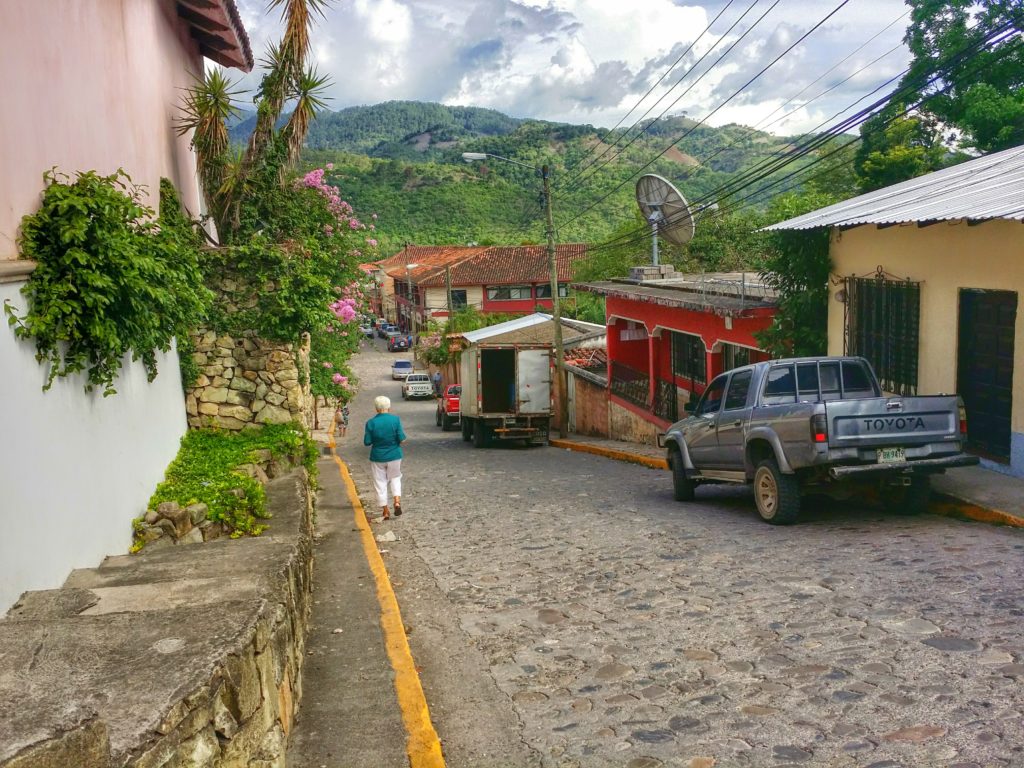
Copan Ruinas blev vårt nästa resmål i Honduras! Copan Ruinas became our next destination in Honduras!

Vi köpte våra biljetter av Diana Express. De tog väl hand om oss och biljetterna till Copan Ruinas var en tredjedel av priset jämfört med det dyrare bussbolaget. Vi betalade 265 Lempiras per person ( Ca 99 SEK) från La Ceiba till Copan Ruinas. We bought our tickets with Diana Express. They took good care of us and the tickets to Copan Ruinas was a third of the price compared to the more expensive bus company. We paid 265 Lempiras per person (around 10.4 Euro) from La Ceiba to Copan Ruinas.

Frukost köptes genom fönsterrutan vid en busshållsplats. Breakfast was purchased through the bus window at a bus stop.
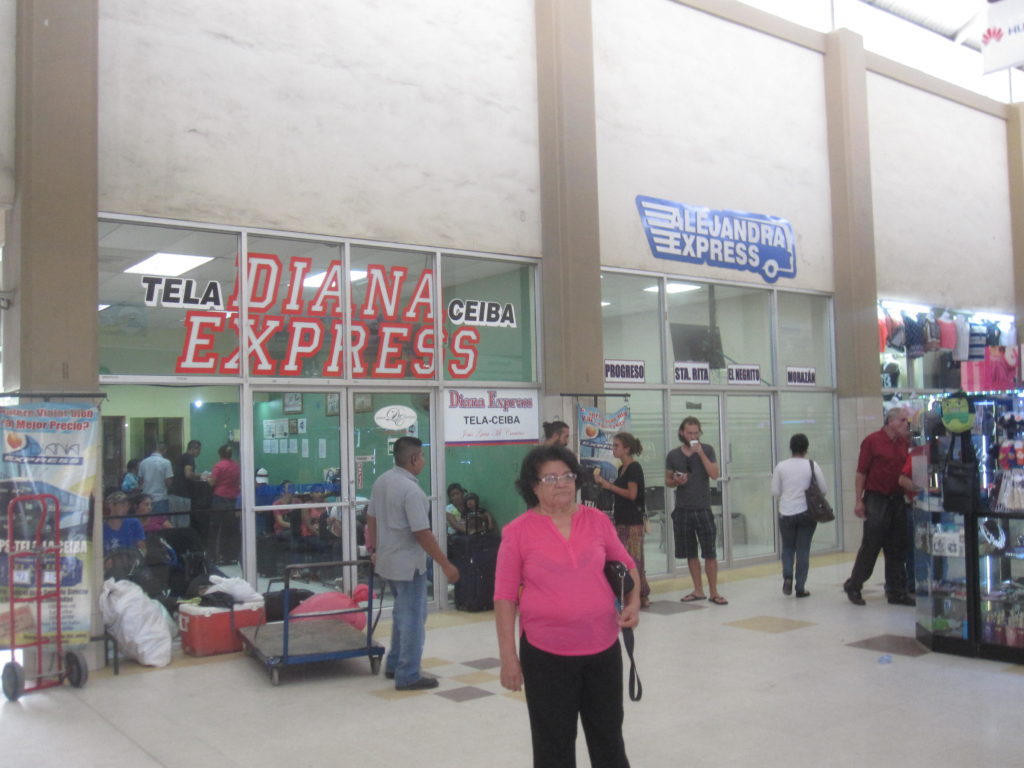
Diana Express väntsal i San Pedro Sula. The Diana Express waiting room in San Pedro Sula.
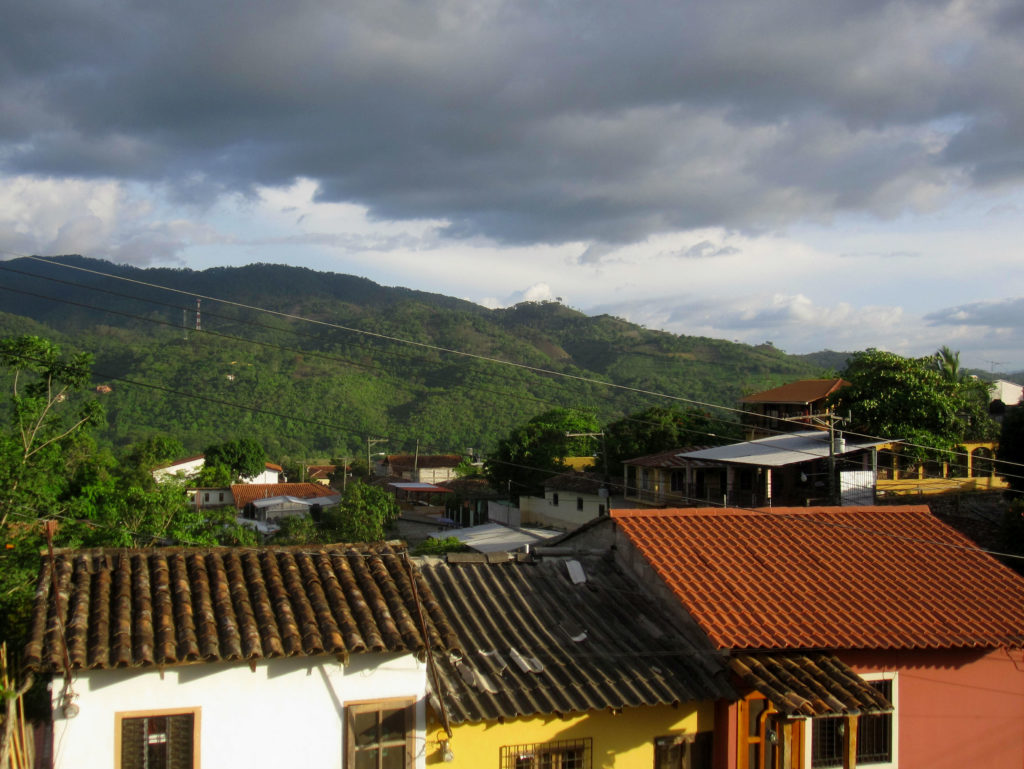
I slutet av dagen så hade vi kommit till Copan Ruinas. At the end of the day we had arrived to Copan Ruinas.

Vi utforskade byn och hittade väldigt fina platser. We explored the village and found very nice places.

Den centrala parken i Copan Ruinas! The central park in Copan Ruinas!

Blommande träd. Flowering trees.
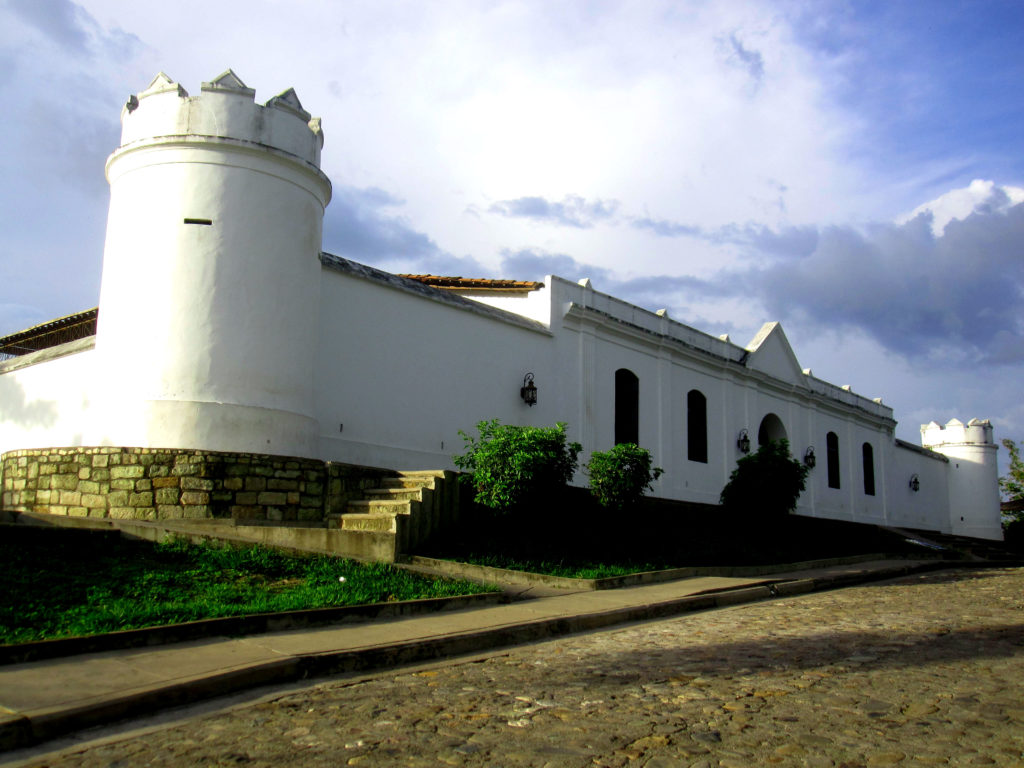
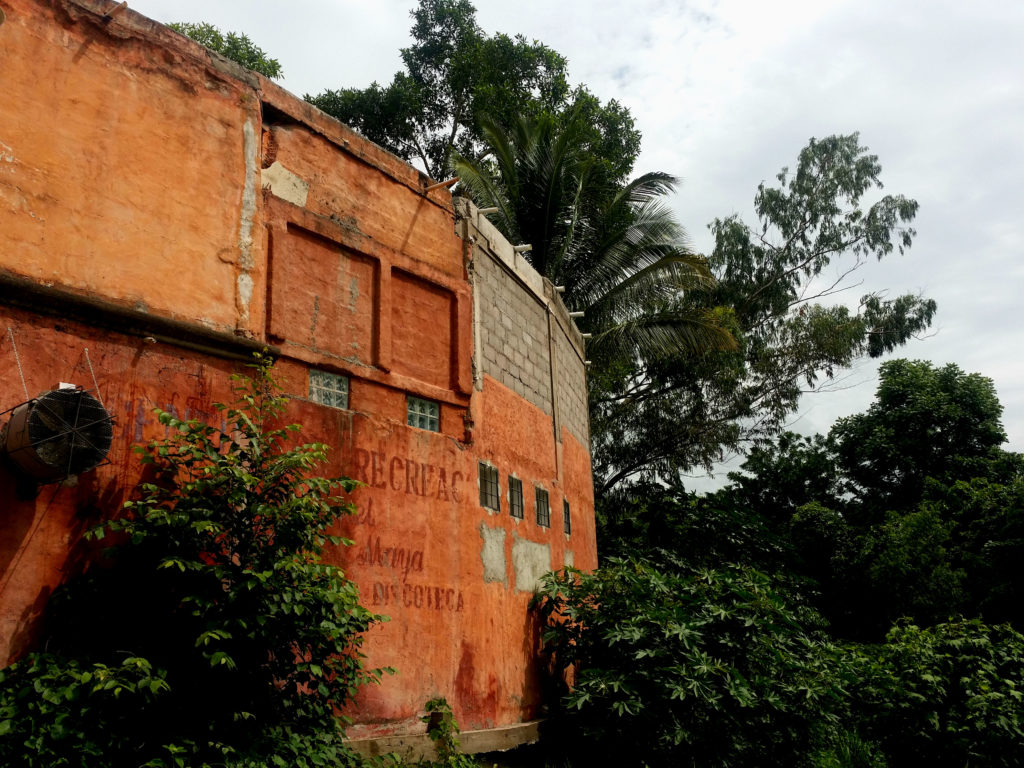

En mysigt inredd restaurang! A cozy decorated restaurant!
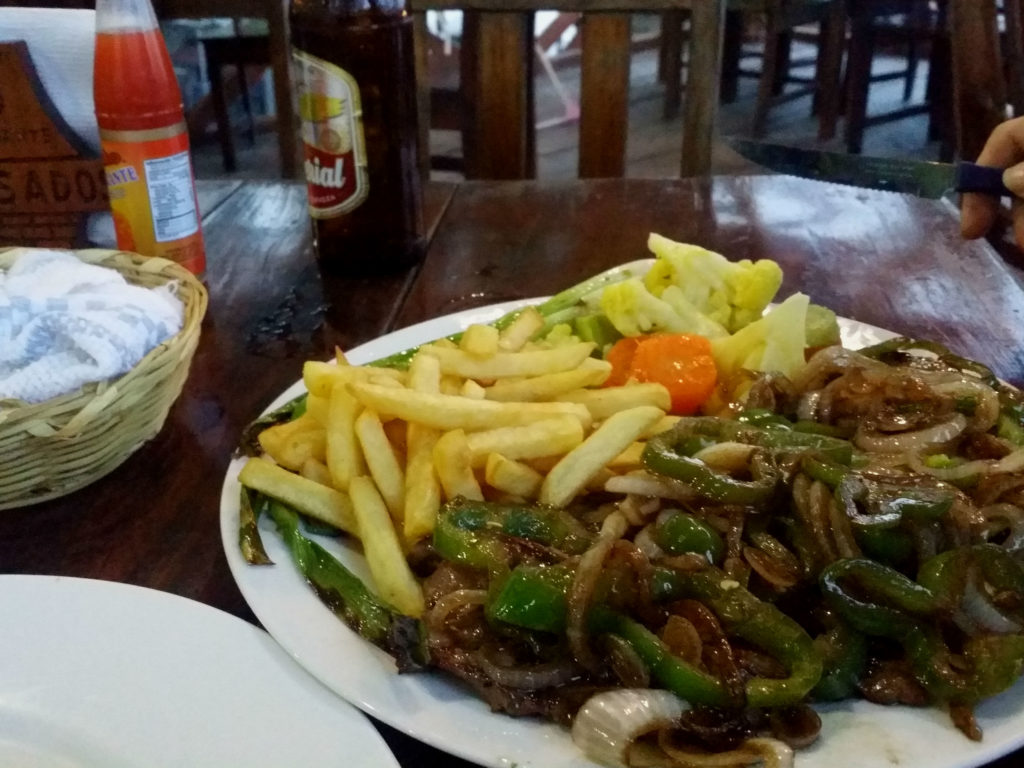
Den godaste köttbit vi ätit i världen kan hittas på restaurangen Los Asodos i Copan Ruinas. The tastiest steak we’ve eaten in the world can be found at the Los Asodos restaurant in Copan Ruinas.
